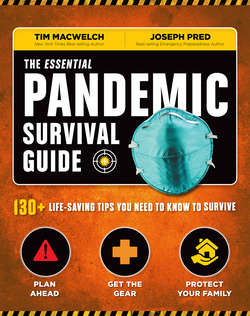Читать книгу The Essential Pandemic Survival Guide - Tim MacWelch - Страница 13
На сайте Литреса книга снята с продажи.
Оглавление01
02
Wondering how to know if what’s going on is an outbreak, an epidemic, or a pandemic? Each represents a jump in severity and, while there are not exact delineations, here are the commonly
understood distinctions.
OUTBREAK An outbreak is a sudden rise in the number of cases of a disease. An outbreak may occur in a community or geographical area, or may even affect several countries. It may last for a few days or weeks, or even for several years. Some outbreaks are expected each year, the most common example being the
seasonal flu that hits every winter.
EPIDEMIC An outbreak becomes an epidemic once it starts spreading more quickly (and usually to a larger
population) than expected.
PANDEMIC If an outbreak spreads rapidly across nations or massive landmasses, it is termed a pandemic. Once it has jumped continents, we
begin calling it a global pandemic.
KNOW THE DIFFERENCE
People who end up in intensive care due to Covid-19 often suffer from acute respiratory distress syndrome, or ARDS, which impairs the lungs’ ability to exchange oxygen and carbon dioxide. This can result in organ failure, brain damage, abnormal heart rhythms, and other serious
conditions. The signs and symptoms of ARDS can begin
within hours to days of infection; treatment uses a ventilator. Globally, ARDS affects more than 3 million people a year, as it can also occur from conditions such as pneumonia, sepsis, severe burns, and smoke inhalation. ARDS has a mortality rate of approximately 40% and even for those who survive, a
decreased quality of life is sadly common.
KNOWABOUT ARDS
